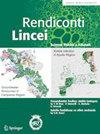智能城市和气候中立:走向能源转型
IF 2.7
4区 综合性期刊
Q2 MULTIDISCIPLINARY SCIENCES
引用次数: 0
摘要
本文讨论了实现全球气候中和的目标,重点关注城市活动、能源生产和消费。欧洲承诺通过气候中和和智慧城市使命,支持100个选定城市到2030年实现气候中和。这一承诺将气候中和与智慧城市的概念结合起来,促进创新,为其他城市在2050年前实现气候中和树立榜样。对于这100个城市,欧洲设想使用金融工具、监管干预和气候城市合同,以及来自国家恢复和韧性计划的资金,这些计划预计将得到适当的协调。由于化石燃料的持续高消耗,以及在未来几十年内不可避免地使用化石燃料,必须努力提高现有发电厂的效率,并利用污染较少的化石燃料来源。使用可再生能源,特别是太阳能、风能和水力发电,变得越来越迫切。考虑到这些能源与电网的自然整合,逐步电气化成为能源转型的关键战略。使用氢作为能源载体和储存源,以及正在进行的核能研究,是有助于执行被认为必要的多样化能源战略的额外基本因素。信息通信技术(ICT)的广泛采用和智能部门的整合也是能源转型的基本组成部分。在欧盟《清洁能源一揽子计划》RED II和IEM指令的推动下,到2030年,生产消费者的可再生能源社区可能会产生20%的城市能源消耗,这进一步强调了电力系统和智能电网在这一背景下的重要性。本文章由计算机程序翻译,如有差异,请以英文原文为准。
Città intelligenti e neutralità climatica: verso la transizione energetica
The contribution discusses the goal of achieving global climate neutrality, focusing on the activities of cities, energy production, and consumption. Europe is committed to supporting a hundred selected cities in reaching climate neutrality by 2030 through the Mission Climate Neutral and Smart Cities. This commitment combines climate neutrality with the concept of smart cities, promoting innovation and setting an example for other cities to achieve climate neutrality by 2050. For the hundred cities, Europe envisions the use of financial tools, regulatory interventions, and a Climate City Contract, along with funds from the national recovery and resilience plans, which are expected to be suitably coordinated. Due to the continued high consumption of fossil fuels, and of their inevitable use in the coming – hopefully few - decades, efforts must be made to improve the efficiency of existing power plants and utilize less polluting fossil fuel sources. The use of renewable sources, particularly solar, wind, and hydroelectric power, becomes increasingly imperative. Gradual electrification of sectors emerges as a key strategy for the energy transition, considering the natural integration of these sources into the power grid. The use of hydrogen as an energy carrier and storage source, as well as ongoing research in nuclear energy, are additional essential elements contributing to the implementation of a diversified energy strategy deemed necessary. The widespread adoption of information and communication technologies (ICT) and smart sector integration are also fundamental components of the energy transition. Renewable energy communities of prosumers, promoted by the European directives RED II and IEM of the Clean Energy Package, could potentially generate 20% of the energy consumed in cities by 2030, further emphasizing the importance of the electrical system and smart grids in this context.
求助全文
通过发布文献求助,成功后即可免费获取论文全文。
去求助
来源期刊

Rendiconti Lincei-Scienze Fisiche E Naturali
MULTIDISCIPLINARY SCIENCES-
CiteScore
4.10
自引率
10.00%
发文量
70
审稿时长
>12 weeks
期刊介绍:
Rendiconti is the interdisciplinary scientific journal of the Accademia dei Lincei, the Italian National Academy, situated in Rome, which publishes original articles in the fi elds of geosciences, envi ronmental sciences, and biological and biomedi cal sciences. Particular interest is accorded to papers dealing with modern trends in the natural sciences, with interdisciplinary relationships and with the roots and historical development of these disciplines.
 求助内容:
求助内容: 应助结果提醒方式:
应助结果提醒方式:


